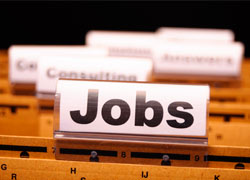After a year and a half of zero interest rates and a “printing press” policy, the US Federal Reserve is preparing to hit the brakes.
The US central bank plans to soon cut back on the asset repurchase program, through which nearly $ 4 trillion has been injected into the markets since the start of the pandemic, which follows from a statement by the Federal Reserve following its meeting on Wednesday.
Having kept the federal funds rate unchanged in the range of 0-0.25% per annum, the FSR notes further growth in economic activity, employment in the US economy, as well as “increased inflation.”
The forecast for the growth rate of prices was raised from 3.4% to 4.2% (based on the consumer spending deflator) and from 3 to 3.7% for core inflation.
Although the economy is growing slower than expected (5.9% for the year versus 7% in the previous forecast), and unemployment will be higher than initial estimates (4.8% versus 4.5%), the Federal Open Market Committee (FOMC) “Believes that a slowdown in asset purchases may soon be required,” the release said.
Now the Fed is pumping $120 billion a month into the markets, buying back government bonds ($ 80 billion) and mortgage bonds ($ 40 billion). But the rapid acceleration of inflation has reached the levels of the Reagan administration, which is changing the balance of power in the American leadership.
If in September the majority of FOMC members were in favor of postponing the rate hike until 2023, now the votes are equally divided. At the same time, out of 9 “hawks,” three want to raise the rate twice – up to 0.5-0.75%.
The rate trajectory has also stepped up, with the majority in the Fed now favoring four hikes by 2023, although three months ago, the bulk of the FOMC voted in only two.
At the same time, the number of those who believe that inflation may go beyond the forecasts has become a record in history – 12 out of 18 representatives of the committee.
The cut in QE “may occur at the next meeting” and will end “somewhere in the middle of next year,” after which the Fed will start raising interest rates, said the head of the regulator Jerome Powell at a press conference. As a result, the forecast for a rate hike in the United States shifted to 2022, a powerful dollar factor. According to analysts at ING, “the market expected the Fed to start reducing asset repurchases, but at the same time, it was set at zero rates for another two years.”
Now investors will have to “re-price,” and the bank believes that expectations may shift in favor of not one but even two increases. First of all, high-yielding currencies of developing countries will fall under the roller of tightening policy in the United States, warns ING.
The idea of cheaply borrowing dollars and investing, for example, in rubles at 7% per annum, will gradually lose its attractiveness: the profitability of the American currency will begin to increase, and the percentage difference on which investors in carry-trade funds play will begin to shrink.
The market greeted the results of the FRS meeting in bewilderment: having jumped, the dollar index began to unexpectedly decline, and then sharply went up again and rewrote the maximum for the month – 93.51 points. The Euro rate against the US dollar fell below 1.17 and almost broke through the minimum since November last year.


